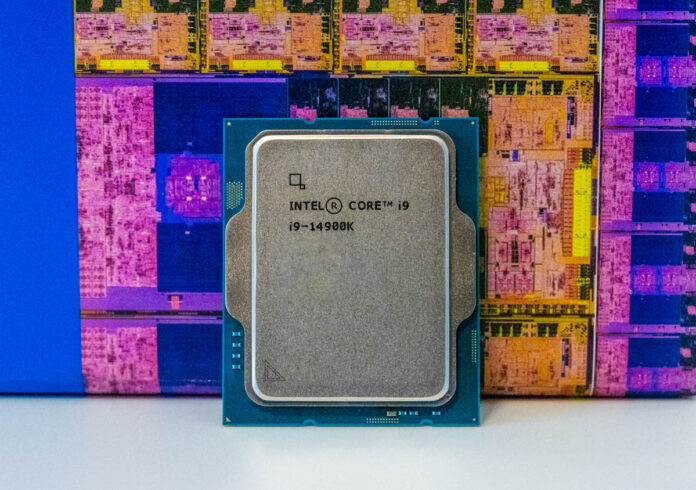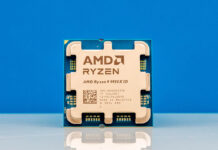Intel announced that it has new processors today. The new 14th Gen Intel Core series includes new SKUs designed for the enthusiast market. At the same time, this is a “refresh” launch, not a new processor series with radically new architecture or manufacturing. Of the three main SKUs, the Core i9, Core i7, and Core i5, the Core i7 will likely see the biggest impact on users as it gets a new core configuration.
14th Gen Intel Core Raptor Lake Refresh Processors Released
Intel has released its 14th generation Core processors, the Core i9-14900K, Core i7-14700K, and Core i5-14600K. These processors are all overclockable and will be available tomorrow, October 17, 2023. Intel is also releasing KF versions of these processors, such as the Intel Core i9-14900KF, without integrated UHD 770 graphics. The most significant change, however, is with the Core i7-14700K, which now has 12 E cores, not just 8.
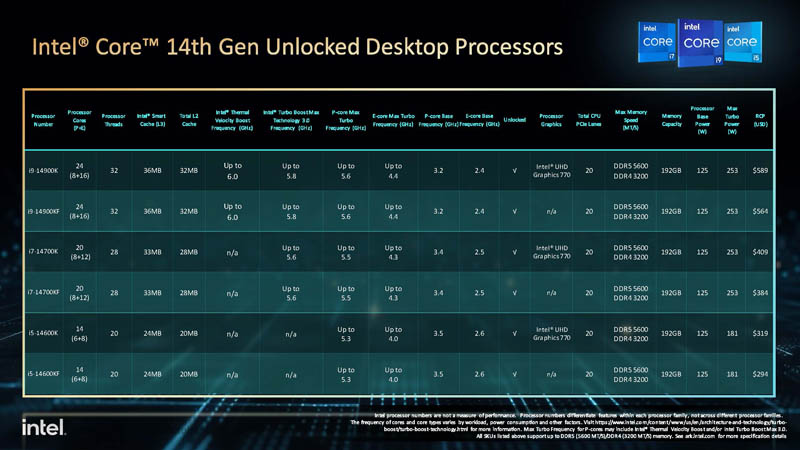
A big part of the release is that these are also drop-in (with BIOS update) replacements for previous-generation platforms. Still, Intel has a few new platform features. Examples include WiFi 7 support and DDR5-5600 support. That WiFi 7 is “discrete,” which means it is not built-in. Instead, this is going to be via an add-in card.
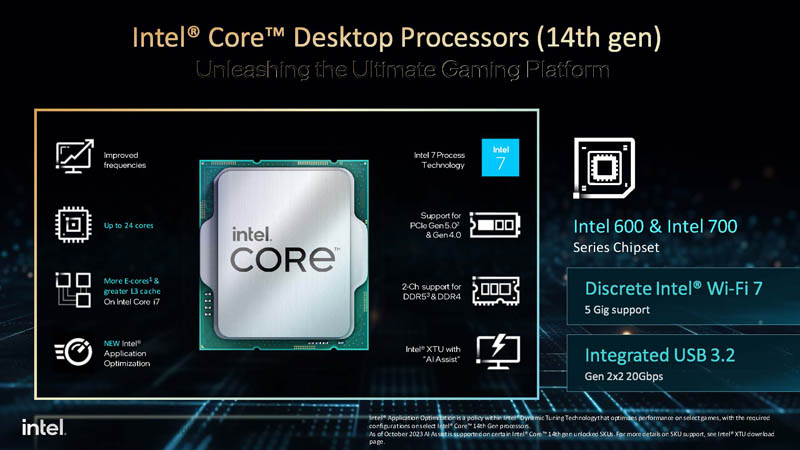
Another feature that is “coming soon” is Thunderbolt 5. To be fair, Thunderbolt 5 is super exciting, but it is not a launch feature.
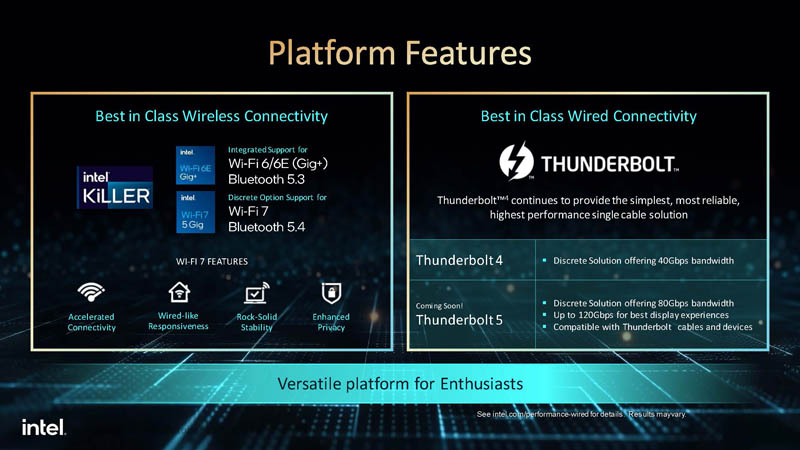
One of the big draws of the 14th gen, since it is a refresh part, is better overclocking. Intel will also support higher-speed XMP profiles beyond DDR5-8000.
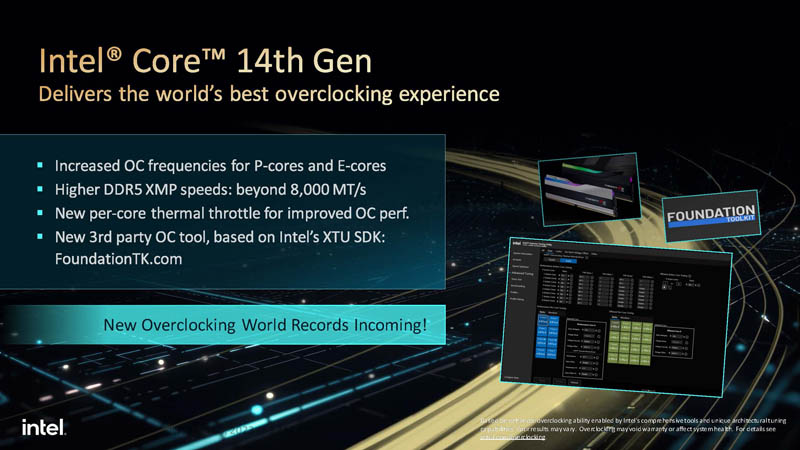
Intel is also using application performance optimization or APO to profile games and CPUs and then optimize for performance. Intel is going through the task of doing the profiling on its end for users to take advantage of.
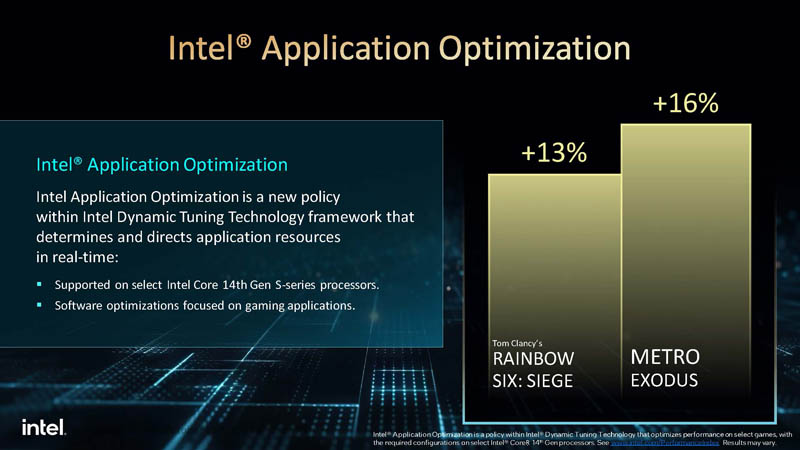
Intel Extreme Tuning Utility (XTU) now has “AI Assist”. Everything is AI now, but the idea is that there are heuristics Intel uses to automatically tune overclocking of these parts.
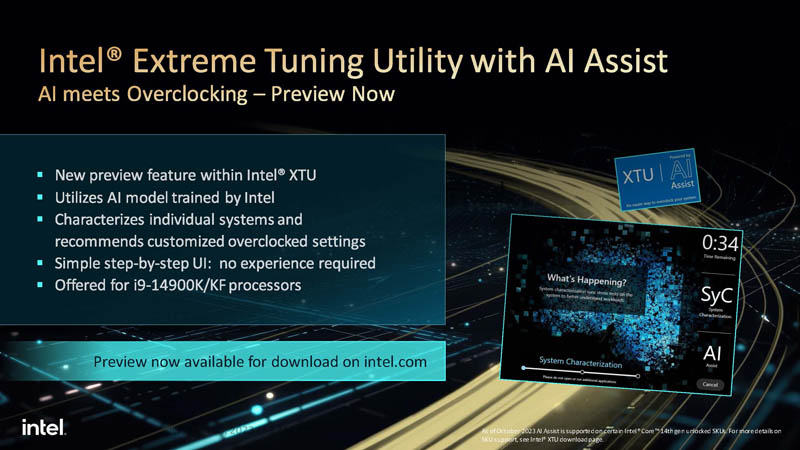
The big reason for this refresh is to offer better performance, of course. Intel is responding to the AMD Ryzen 9 7950X3D, AMD’s gaming flagship with its extra cache. Intel says that, on balance, it is faster than AMD’s part in gaming.
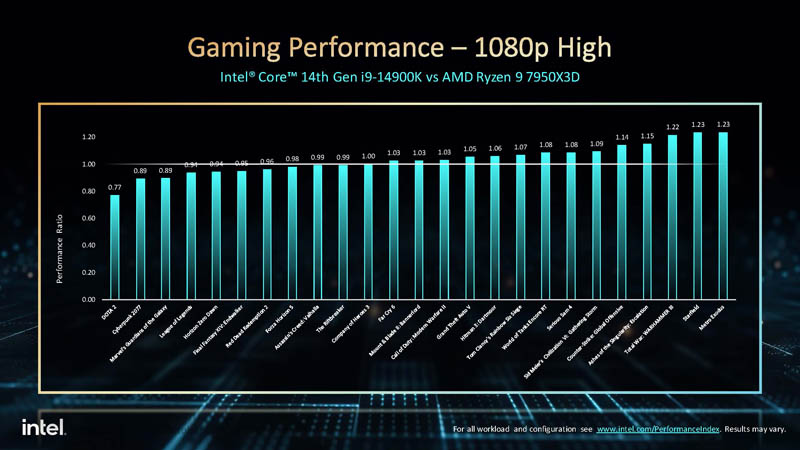
It also shows the performance versus the non-X3D parts, which is good since not every game gets a major boost with the cache configuration.
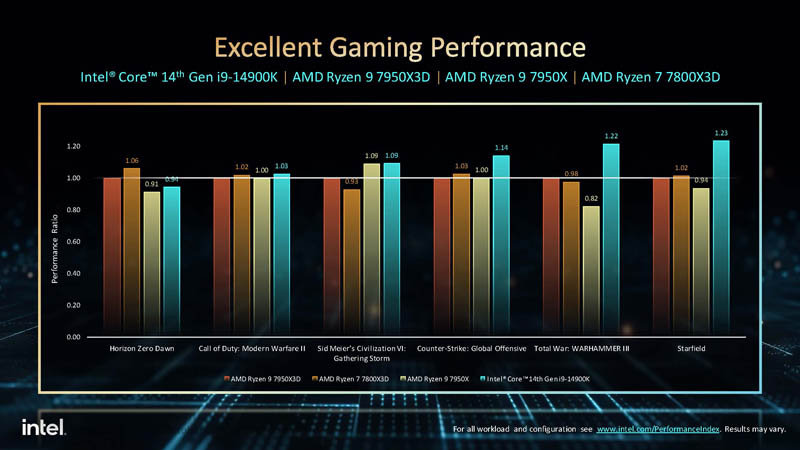
However, Intel says it gets better frame consistency at the 99th percentile than AMD.
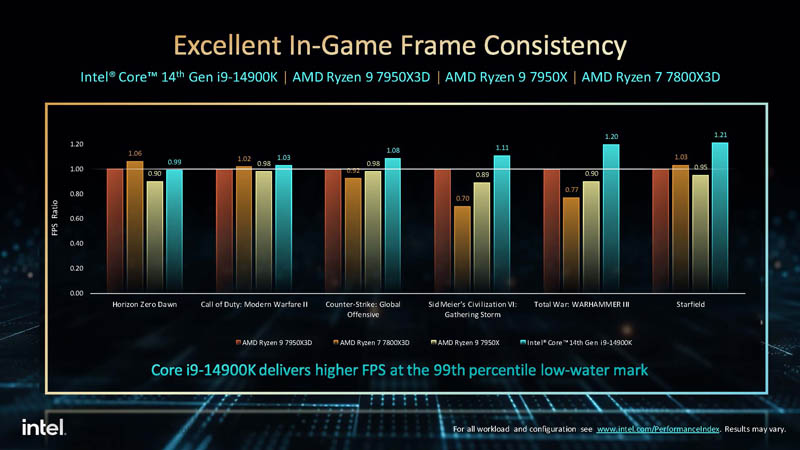
It also says that it is better for content creators than AMD, and even brings in an interesting comparison point, the Intel Core i7-14700K to these charts.
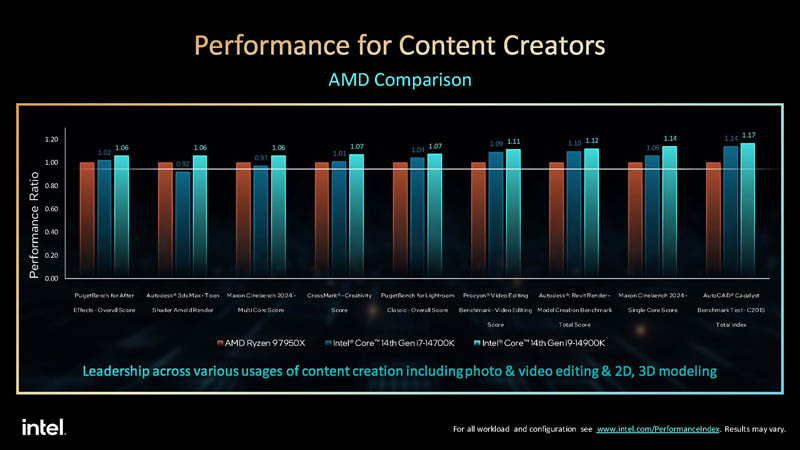
The 14th-generation Core processors refresh the 13th-generation and offer modest performance improvements in most cases. The Core i7-14700K is the most appealing processor in the lineup, offering more E-cores, and is the SKU that probably gained the most from the refresh.
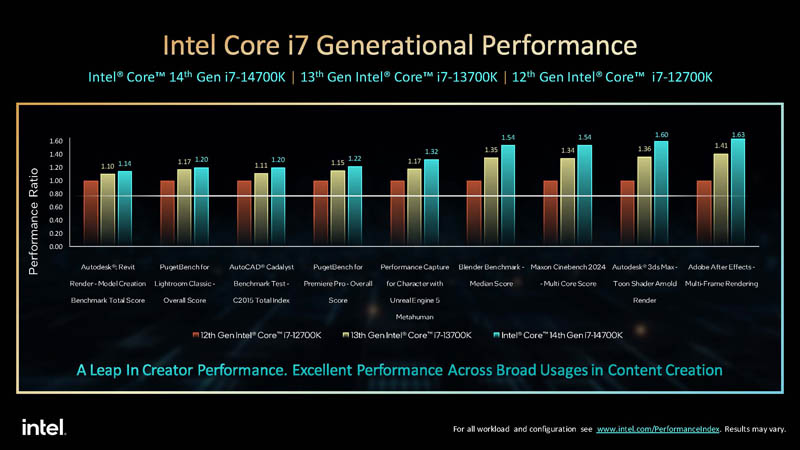
Intel is also introducing new AI features with the 14th generation Core processors. The AI Assist overclocking tool can automatically overclock your processor for you. The Application Optimization feature can automatically optimize specific programs for better performance.
Final Words
Overall, this is probably not a release that is going to see tons of folks with 13th Gen Core processors upgrading to 14th Gen. From our early testing, that is our gut feeling. On the other hand, the fact that Intel has largely held pricing while offering more performance means that if you had the choice of the 14th or 13th Gen at a price point, you would go 14th Gen.
We have heard from several systems vendors that the Core i7-14700K is the one they are most excited about. Adding four more E-cores is a significant core count bump and might be the biggest change in the entire line. While many of our readers may be excited with a Core i9 at 6GHz, adding more E cores is probably a more power-efficient means to add performance in most applications than trying to scale the voltage/ frequency curve.

